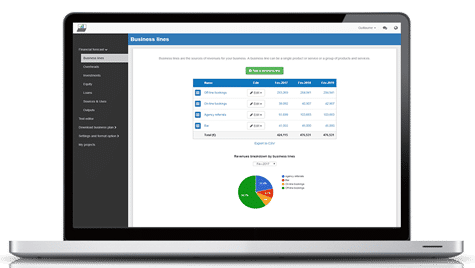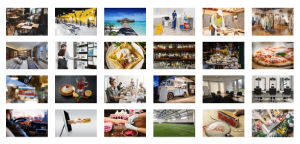How to create a financial forecast for a truck and van dealership?
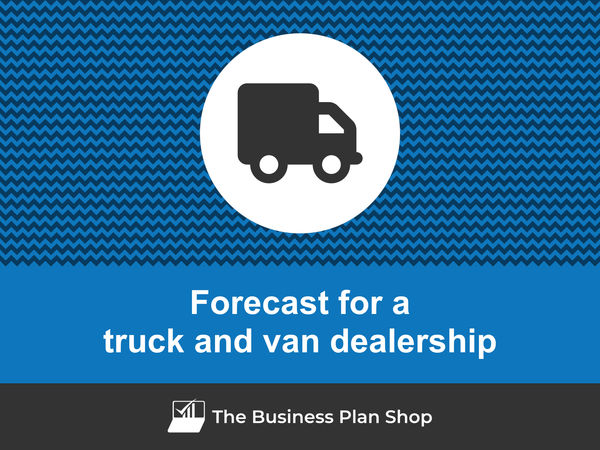
Creating a financial forecast for your truck and van dealership, and ensuring it stays up to date, is the only way to maintain visibility on future cash flows.
This might sound complex, but with the right guidance and tools, creating an accurate financial forecast for your truck and van dealership is not that hard.
In this guide, we'll cover everything from the main goal of a financial projection, the data you need as input, to the tables that compose it, and the tools that can help you build a forecast efficiently.
Without further ado, let us begin!
Why create and maintain a financial forecast for a truck and van dealership?
The financial projections for your truck and van dealership act as a financial blueprint to guide its growth with confidence and ensure its long-term financial viability.
To create them, you will need to look at your business in detail - from sales to operating costs and investments - to assess how much profit it can generate in the years to come and what will be the associated cash flows.
During challenging market conditions, maintaining an up-to-date financial forecast enables early detection of potential financial shortfalls, allowing for timely adjustments or securing financing before facing a cash crisis.
Your truck and van dealership's financial forecast will also prove invaluable when seeking financing. Banks and investors will undoubtedly request a thorough examination of your financial figures, making precision and presentation essential.
Need a solid financial forecast?
The Business Plan Shop does the maths for you. Simply enter your revenues, costs and investments. Click save and our online tool builds a three-way forecast for you instantly.
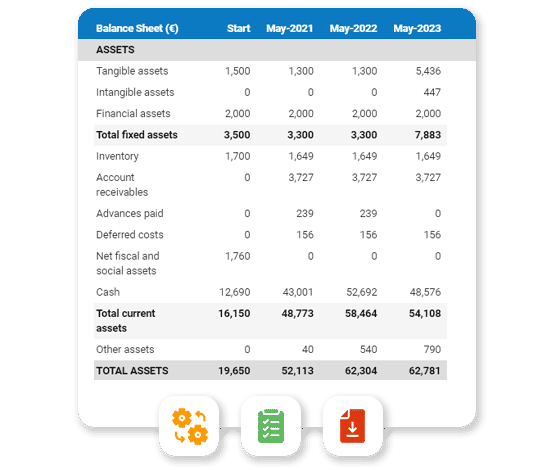
What information is needed to build a truck and van dealership financial forecast?
The quality of your inputs is key when it comes to financial modelling: no matter how good the model is, if your inputs are off, so will the forecast.
If you are building a financial plan to start a truck and van dealership, you will need to have done your market research and have a clear picture of your sales and marketing strategies so that you can project revenues with confidence.
You will also need to have a clear idea of what resources will be required to operate the truck and van dealership on a daily basis, and to have done your research with regard to the equipment needed to launch your venture (see further down this guide).
If you are creating a financial forecast of an existing truck and van dealership, things are usually simpler as you will be able to use your historical accounting data as a budgeting base, and complement that with your team’s view on what lies ahead for the years to come.
Let's now zoom in on what will go in your truck and van dealership's financial forecast.
The sales forecast for a truck and van dealership
The sales forecast, also called topline projection, is normally where you will start when building your truck and van dealership financial forecast.
Creating a coherent sales projection boils down to estimating two key drivers:
- The average price
- The number of monthly transactions
To do this, you will need to rely on historical data (for an existing business), market research data (for both new and existing truck and van dealerships), and consider the elements below:
- Changes in the economy: The state of the economy can greatly impact the average price and number of monthly transactions for your truck and van dealership. During an economic downturn, customers may be more hesitant to make large purchases, resulting in fewer transactions and potentially a decrease in average price.
- Availability of newer models: As new models of trucks and vans are released, customers may be more inclined to purchase the newer, more advanced models. This could result in a decrease in average price as customers opt for the newer, possibly less expensive models, but an increase in the number of monthly transactions as more customers are interested in purchasing the newer models.
- Competition in the market: The presence of other truck and van dealerships in your area can greatly affect your business's sales forecast. If there is high competition, you may need to lower your average price to remain competitive and attract customers. However, if there is little competition, you may be able to increase your average price and potentially increase the number of monthly transactions.
- Changes in consumer preferences: As consumer preferences shift towards more eco-friendly and fuel-efficient vehicles, your truck and van dealership may need to adapt by offering these types of vehicles. This could result in a higher average price for these vehicles, but potentially a decrease in the number of monthly transactions as they may be more expensive than traditional models.
- Availability of financing options: The availability and terms of financing options can greatly impact the average price and number of monthly transactions for your dealership. If financing options are limited or have unfavorable terms, customers may be less likely to purchase from your dealership, resulting in a decrease in both average price and number of monthly transactions. On the other hand, more favorable financing options could lead to an increase in both average price and number of monthly transactions.
After the sales forecast comes the operating expenses budget, which we will now look into in more detail.
Need inspiration for your business plan?
The Business Plan Shop has dozens of business plan templates that you can use to get a clear idea of what a complete business plan looks like.
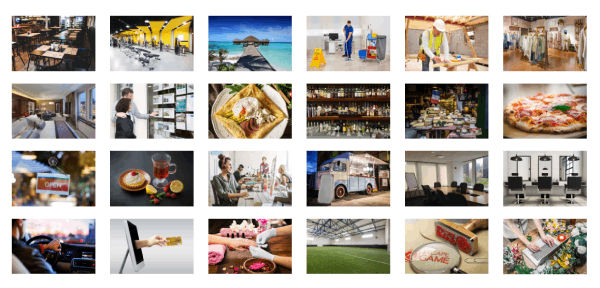
The operating expenses for a truck and van dealership
The next step is to estimate the expenses needed to run your truck and van dealership on a day-to-day basis.
These will vary based on the level of sales expected, and the location and size of your business.
But your truck and van dealership's operating expenses should include the following items at a minimum:
- Staff Costs: This includes the salaries, wages, and benefits of all employees, including sales staff, mechanics, and administrative staff.
- Accountancy Fees: You will need to hire an accountant or use accounting software to manage your financial records, prepare taxes, and ensure compliance with laws and regulations.
- Insurance Costs: As a dealership, you will need insurance coverage for your inventory, liability, and employees.
- Software Licences: You will need to purchase software licences for various purposes, such as inventory management, customer relationship management, and accounting.
- Banking Fees: You will incur fees for banking services, such as wire transfers, credit card processing, and checking accounts.
- Marketing and Advertising: To attract customers, you will need to spend money on marketing and advertising, including online ads, print materials, and sponsorships.
- Rent or Mortgage: You may need to pay rent or a mortgage for your dealership's physical location.
- Utilities: You will need to pay for utilities, such as electricity, water, and internet, to keep your dealership running.
- Vehicle Maintenance: As a dealership, you will need to regularly maintain your inventory and service vehicles for customers.
- Taxes and Licences: You will need to pay taxes and licensing fees to operate your dealership legally.
- Inventory: You will need to purchase inventory, such as trucks and vans, to sell to customers.
- Training and Education: To keep up with industry trends and regulations, you may need to invest in training and education for yourself and your employees.
- Office Supplies: You will need to purchase office supplies, such as paper, ink, and pens, to keep your dealership running smoothly.
- Travel Expenses: You may need to travel for business purposes, such as attending conferences or visiting suppliers.
- Repairs and Maintenance: You will need to budget for unexpected repairs and maintenance for your dealership and vehicles.
This list is, of course, not exhaustive, and you'll have to adapt it according to your precise business model and size. A small truck and van dealership might not have the same level of expenditure as a larger one, for example.
What investments are needed to start or grow a truck and van dealership?
Once you have an idea of how much sales you could achieve and what it will cost to run your truck and van dealership, it is time to look into the equipment required to launch or expand the activity.
For a truck and van dealership, capital expenditures and initial working capital items could include:
- Inventory: As a truck and van dealership, you will need to invest in inventory to have vehicles available for sale. This includes both new and used trucks and vans, as well as any parts and accessories that you may offer for sale.
- Facility Improvements: Your dealership will require a physical space to showcase and sell your vehicles. This may include renovations or upgrades to the building, such as adding a showroom, service bays, or storage space. You may also need to invest in equipment for the facility, such as lifts and diagnostic tools.
- Commercial Vehicle Fleet: In order to provide your customers with the best selection and service, you may need to invest in a fleet of commercial vehicles for your dealership. This could include delivery trucks, tow trucks, or other vehicles to transport inventory or provide services to customers.
- Technology and Software: Technology plays a crucial role in the modern dealership, from managing inventory and sales to providing customer service. You may need to invest in software systems, hardware, and other technology to keep your dealership running smoothly and efficiently.
- Office Furniture and Equipment: In addition to the physical space and technology, you will also need to outfit your dealership with office furniture and equipment. This may include desks, chairs, computers, and other essential items for your staff to work effectively and comfortably.
Again, this list will need to be adjusted according to the specificities of your truck and van dealership.
Need a convincing business plan?
The Business Plan Shop makes it easy to create a financial forecast to assess the potential profitability of your projects, and write a business plan that’ll wow investors.
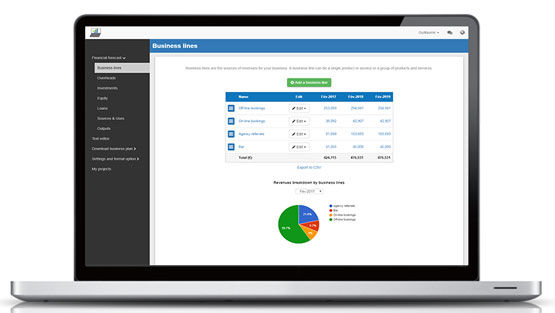
The financing plan of your truck and van dealership
The next step in the creation of your financial forecast for your truck and van dealership is to think about how you might finance your business.
You will have to assess how much capital will come from shareholders (equity) and how much can be secured through banks.
Bank loans will have to be modelled so that you can separate the interest expenses from the repayments of principal, and include all this data in your forecast.
Issuing share capital and obtaining a bank loan are two of the most common ways that entrepreneurs finance their businesses.
What tables compose the financial plan for a truck and van dealership?
Now let's have a look at the main output tables of your truck and van dealership's financial forecast.
The projected profit & loss statement
The projected profit & loss shows how profitable your truck and van dealership is likely to be in the years to come.

For your truck and van dealership to be financially viable, your projected P&L should ideally show:
- Sales growing above inflation (the higher the better)
- Profit margins which are stable or expanding (the higher the better)
- A net profit at the end of each financial year (the higher the better)
This is for established truck and van dealerships, there is some leniency for startups which will have numbers that will look a bit different than existing businesses.
The projected balance sheet
The projected balance sheet gives an overview of your truck and van dealership's financial structure at the end of the financial year.
It is composed of three categories of items: assets, liabilities and equity:
- Assets: are what the business possesses and uses to produce cash flows. It includes resources such as cash, buildings, equipment, and accounts receivable (money owed by clients).
- Liabilities: are the debts of your truck and van dealership. They include accounts payable (money owed to suppliers), taxes due and bank loans.
- Equity: is the combination of what has been invested by the business owners and the cumulative profits to date (which are called retained earnings). Equity is a proxy for the value of the owner's stake in the business.

The projected cash flow statement
A projected cash flow statement for a truck and van dealership is used to show how much cash the business is generating or consuming.
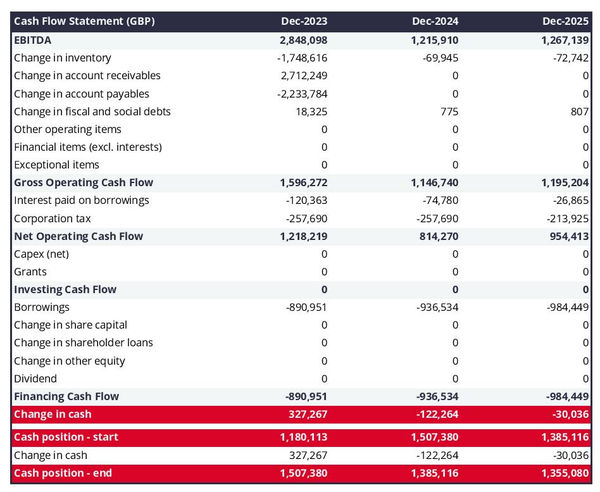
The cash flow forecast is usually organised by nature to show three key metrics:
- The operating cash flow: do the core business activities generate or consume cash?
- The investing cash flow: how much is the business investing in long-term assets (this is usually compared to the level of fixed assets on the balance sheet to assess whether the business is regularly maintaining and renewing its equipment)?
- The financing cash flow: is the business raising new financing or repaying financiers (debt repayment, dividends)?
Cash is king and keeping an eye on future cash flows is imperative for running a successful business. Therefore, you should pay close attention to your truck and van dealership's cash flow forecast.
If you are trying to secure financing, note that it is customary to provide both yearly and monthly cash flow forecasts in a financial plan - so that the reader can analyze seasonal variation and ensure the truck and van dealership is appropriately capitalised.
Need a solid financial forecast?
The Business Plan Shop does the maths for you. Simply enter your revenues, costs and investments. Click save and our online tool builds a three-way forecast for you instantly.

Which tool should you use to create your truck and van dealership's financial forecast?
Creating your truck and van dealership's financial forecast may sound fairly daunting, but the good news is that there are several ways to go about it.
Using online financial projection software to build your truck and van dealership's forecast
The modern and easiest way to build a forecast is to use professional financial projection software such as the one we offer at The Business Plan Shop.
There are several advantages to using specialised software:
- You can easily create your financial forecast by letting the software take care of the financial calculations for you without errors
- You have access to complete financial forecast templates
- You get a complete financial forecast ready to be sent to your bank or investors
- You can easily track your actual financial performance against your financial forecast, and recalibrate your forecast as the year goes by
- You can create scenarios to stress test your forecast's main assumptions
- You can easily update your forecast as time goes by to maintain visibility on future cash flows
- You have a friendly support team on standby to assist you when you are stuck
- It’s cost-efficient and much cheaper than using an accountant or consultant (see below)
If you are interested in this type of solution, you can try our forecasting software for free by signing up here.
Hiring a financial consultant or chartered accountant
Hiring a consultant or chartered accountant is also an efficient way to get a professional truck and van dealership financial projection.
As you can imagine, this solution is much more expensive than using software. From experience, the creation of a simple financial forecast over three years (including a balance sheet, income statement, and cash flow statement) is likely to start around £700 or $1,000 excluding taxes.
The indicative estimate above, is for a small business, and a forecast done as a one-off. Using a financial consultant or accountant to track your actuals vs. forecast and to keep your financial forecast up to date on a monthly or quarterly basis will naturally cost a lot more.
If you choose this solution, make sure your service provider has first-hand experience in your industry, so that they may challenge your assumptions and offer insights (as opposed to just taking your figures at face value to create the forecast’s financial statements).
Why not use a spreadsheet such as Excel or Google Sheets to build your truck and van dealership's financial forecast?
You and your financial partners need numbers you can trust. Unless you have studied finance or accounting, creating a trustworthy and error-free truck and van dealership financial forecast on a spreadsheet is likely to prove challenging.
Financial modelling is very technical by nature and requires a solid grasp of accounting principles to be done without errors. This means that using spreadsheet software like Excel or Google Sheets to create accurate financial forecasts is out of reach for most business owners.
Creating forecasts in Excel is also inefficient nowadays:
- Software has advanced to the point where forecasting can be done much faster and more accurately than manually on a spreadsheet.
- With artificial intelligence, the software is capable of detecting mistakes and helping decision-making.
Spreadsheets are versatile tools but they are not tailor-made for reporting. Importing your truck and van dealership's accounting data in Excel to track actual vs. forecast is incredibly manual and tedious (and so is keeping forecasts up to date). It is much faster to use dedicated financial planning tools like The Business Plan Shop which are built specially for this.
Need a convincing business plan?
The Business Plan Shop makes it easy to create a financial forecast to assess the potential profitability of your projects, and write a business plan that’ll wow investors.

Use our financial forecast templates for inspiration
The Business Plan Shop has dozens of financial forecast examples available.
Our templates contain both a financial forecast and a written business plan which presents, in detail, the company, the team, the strategy, and the medium-term objectives.
Our templates are a great source of inspiration, whether you just want to see what a complete business plan looks like, or are looking for concrete examples of how you should model financial elements in your own forecast.
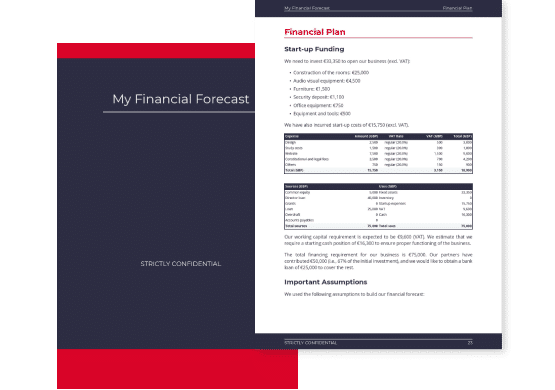
Takeaways
- A financial forecast shows expected growth, profitability, and cash generation metrics for your truck and van dealership.
- Tracking actuals vs. forecast and having an up-to-date financial forecast is key to maintaining visibility on your future cash flows.
- Using financial forecasting software is the modern way of creating and maintaining financial projections.
We hope that this guide helped you gain a clearer perspective on the steps needed to create the financial forecast for a truck and van dealership. Don't hesitate to contact us if you have any questions!
Need inspiration for your business plan?
The Business Plan Shop has dozens of business plan templates that you can use to get a clear idea of what a complete business plan looks like.

Also on The Business Plan Shop
Know someone who runs a truck and van dealership? Share our business guide with them!

